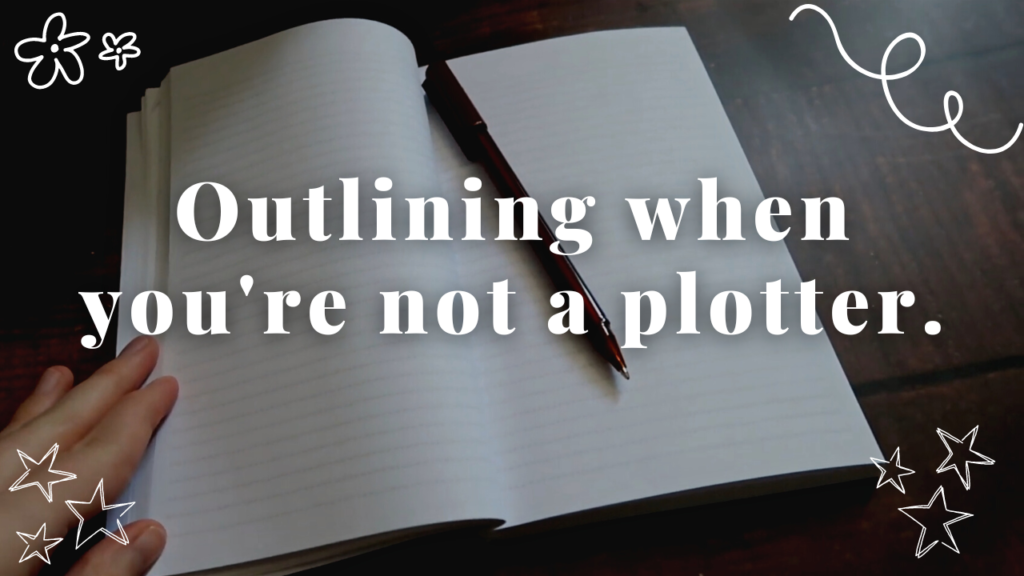
Outlining a novel can sometimes be more difficult than writing it.
Or, at least, in my experience. I mention in a past blog that my writing style is that of a plantser. I use a mixture of plotting and plansing my way through my early drafts. I keep my outlining simple and then add to it as I go and the story evolves. In this blog, I am going to talk you through how I outline my novels in the beginning stages of my stories.
My method for outlining is very simple. I am not a writer to likes to have a detailed plan of their novel ahead of writing it. I need the creative space to allow my ideas to grow as the story goes along. However, this doesn’t mean that I go in with a blank document and hope that my imagination will pull me through. I am not capable enough to write in that style.
Instead, my outlining methods can be broken down into two parts; the outlining I do before I start writing and the outlining I do as I write.
Let’s start with the before. In another blog, I talked about how I turn my ideas into a workable plot and during that process of mind mapping, in my case usually, I have already begun to discover parts of my plot and of the world in which I am going to work in.
From this mindmap or list or whatever method I used, I take out any plot points I have come up with, be it ideas for short scenes or a character arc, and write them out of a separate page so that I can see them clearly away from everything else. Now, I have mentioned this before, I prefer to take note by hand but if you prefer to type up your early ideas then you can literally just copy and paste plot points onto a new document.
With these plot points, I place them into a roughly ordered list. Now this list isn’t concrete by any means. Its just a basic look at how these events I have come up with might place together in the storyline.
Using this, I create an overview outline. An overview outline is great for writer, like myself, who like having a general idea of where their story is heading but also want the freedom and flexibility to change things up as I go. This type of outlining works best if you have a relatively well-developed idea in mind. It works by dividing the book up into sections. I keep it simple and keep to three sections—beginning, middle and end—but you can change this up into as sections or parts that works best for your story.
I then take my roughly ordered list of plot points and separate it into three different lists, one for each section. I don’t tend to worry about making sure that I have loads listed or filling in the gaps, as I will do this as I write and discover more about my novel.
This is a type of signpost writing. So rather than creating a detailed outline, you create signpost, key events or elements of your story that you then bridge together as you write.
With this overview outline, I know the rough development of the plot. I like to have a basic idea for my story’s beginning and end before I start writing as then I know how it starts and the conclusion I want to get to. The middle part is usually where I just scribble down ideas for scenes that I have but don’t know exactly where I want to place them. This method allows me to have a structure to work with but still allows me the flexibility to develop as I go.
As I start writing, my outline continues to develop.
My overview outline remains as my starting point, but as I write it becomes more detailed. I break down each part into chapters and scenes. Take those random scene ideas I placed in the middle and, as I write them, place them into their proper places. New ideas that I have discovered as I write will be added in too.
As I write one scene, I tend to develop the plot of the next few scenes to come. These ideas can literally be nothing more than a few-worded bullet point list, but I add these lists into my overview outline so that I always have a rough direction for my novel. As I finish one chapter or scene, I will briefly outline the next one and I will keep working like that until I reach the end of my first draft.
After my first draft, I tend to do more outlining. Now that I know how my story is going to go, I will go back and plan it out in more detail, structuring subplots and working out plot holes and so on. But I’ll talk about that another time.
As I said at the start of the blog, this is just how I outline. Detailed plotters might be watching this and hating every moment. However, this is what works for me. It might not work for you, but that’s okay. Writing is subjective and sometimes we have to find what doesn’t work in order to find what does.
